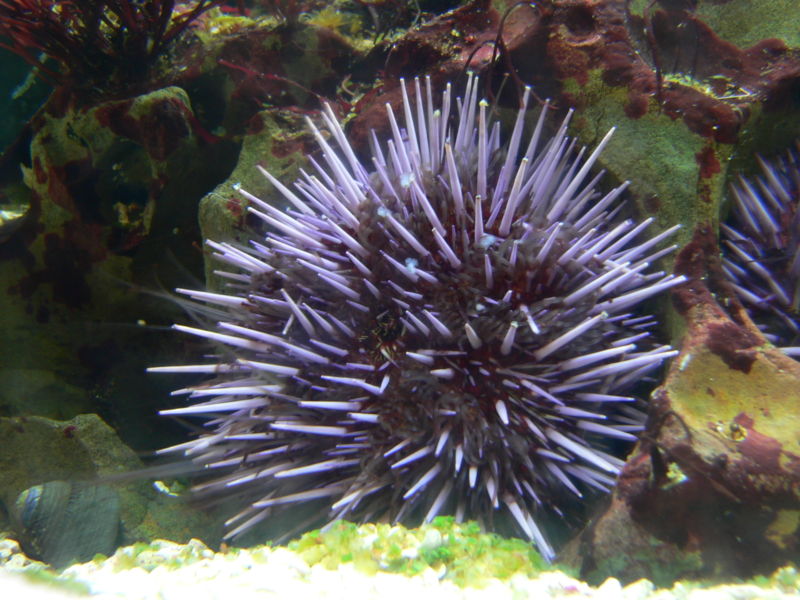Please note: Osher Rainforest will be closed for maintenance May 7-9.
Science News
Swimming in the News
May 6, 2011

This Friday’s science headline wrap-up is all about watery creatures. Enjoy!
Maybe the way to save threatened animals and plant-life is to put a price tag on them. We reported in February about a movement to stop shark finning. This week, the Pew Environmental Group valued each reef shark in Palau at $179,000 or $1.9 million over its lifetime. In contrast, a single reef shark would only bring an estimated $108 for its fin. In Palau, not only are the sharks valuable for tourism, as apex predators they keep the marine food chain in balance.
Last year, a gray whale in the Mediterranean Sea garnered worldwide attention. Researchers believe the warming Arctic sea is to blame and that it’s likely we can expect more wayward whales. Nature News has more on the migration mishap.
In 2010, Science in Action covered a story on sea urchin vision—how these spiky creatures see without eyes. This week, researchers publishing in the Proceedings of the National Academy of Sciences, declared that the sea urchin body is essentially one big eye! From National Geographic News:
The team suspects that sea urchins use their tube feet as retinas and the rest of their bodies to shield against the extra incoming light.
Eyes are overrated.
Finally, the New York Times had two stories this week on everyone’s favorite sustainable seafood: tilapia. The fish may not be as healthy for the environment as we think. Farming practices in China and Latin America are a little fishy and there is little regulation. But help may be on the way. The Times does report that
The two-year-old Aquaculture Stewardship Council, the brainchild of the conservation organization WWF… is rolling out an inspection program for tilapia farms independent of the industry. Those that choose to participate — and pass — will receive labels identifying their product as “responsibly farmed.”
Image by David Monniaux/Wikimedia